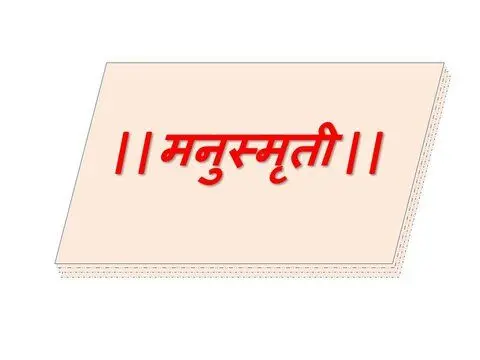
Manusmriti is the first book on the law in the world, which deals with the social and moral conduct of a person. It falls in the Smriti category of Hindu scriptures and hence, it is less authoritative than the Vedas and the Upanishads.
It is also one of the most defamed Hindu books as Dr. Ambedkar had burnt the copies of it to protest against the Hindu caste system. To date, many people look at it as a symbol of the caste system. The evangelists use this book as a weapon against Hinduism to provoke Dalits.
Manusmriti was written in the post-Vedic period after the fall of the Mauryan Empire but they are based on Dharma Sutras written in the Vedic period. The sages who wrote it modified Dharma Sutras to fit the era of a rigid caste system that prevailed during the post-Vedic period.
Another name of Manusmriti is “Dharmasutras of Manava”. There are other Smritis also like Narad Smriti, Yajnavalkya Smriti, Brihaspati Smriti, etc. but Manusmriti is the most famous of them all.
Manusmriti does not talk about caste but it talks about Varna, viz. Brahmin, Kshatriya, Vaisya, and Shudra. There is no mention of the Varna system according to birth but it advocates the system based on the qualities of a person. If a Shudra possesses qualities of a Brahmin, he could be promoted as a Brahmin but if a Brahmin does not possess the qualities required, then he could be demoted as a Shudra.
There are 12 chapters in Manusmriti. It was translated into English by George Buhler. You can read Manusmriti online by following the links given below:
Image Credit: Katyare
“Manusmriti is a holy book to be read and followed by all” you wrote
Why a Sudra as you people designated and suppressed millions of years should follow? What he will get by following it. Can you find a religion that dictates not to study, not to dress properly, not to eat good food -all have been done with the tacit collusion of the then Kings who are mostly selfish